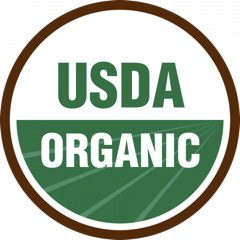When the National Organic Standards Board meets this week in St. Louis, its 15 members will confront some particularly controversial agenda items involving whether certain substances and production methods are acceptable for use in food items certified as organic.

The NOSB is an citizen advisory group responsible for considering and making recommendations to USDA on a wide range of issues involving the production, handling and processing of organic products. It has particular responsibility for adding, removing, or sunset reviewing items on the National List of Allowed and Prohibited Substances.
The list details a variety of substances that may and may not be used in organic production or handling. As part of its charge, the NOSB must review each substance on the list every five years to make sure it confirms to specific criteria and also consider petitions to add or delete a particular substance.
According to Miles McEvoy, deputy administrator of USDA’s National Organic Program, federal organic standards are designed to “allow natural substances in organic farming while prohibiting synthetic substances.” However, he notes there are exceptions, such as pheromones used on fruit crops to fight insects and certain animal vaccines.
“The National List also allows certain processing aids, such as baking soda. This substance lightens (or leavens) the dough for organic pancakes, baked goods, and other products,” McEvoy explains. “Conversely, some substances like strychnine and arsenic are examples of natural toxic substances that are prohibited in organic production.”
The carrageenan controversy
NOSB members will finish reviewing substances with 2018 sunset dates at this week’s meeting. One of them is carrageenan, an FDA-approved food additive made from a species of red seaweed and used in infant formula, dairy products, non-dairy “milk” analogs, meats and drink mixes to promote gel formation and thicken, stabilize and improve palatability and appearance.

Carrageenan is scheduled to be removed from the list on Nov. 3, 2018. It is currently categorized as a “nonagricultural substance” that may be used as an ingredient in or on processed products labeled as “organic” or “made with organic” ingredients or food groups.
Concerns have been raised about how the seaweed is grown and harvested, how it is processed, and whether carrageenan is a “synthetic material” under NOSB’s definition.
Concerns have also been raised about the risk of inflammation and possibly colon cancer in humans and animals from ingesting carrageenan in food products. However, there is a lack of consensus about whether the scientific studies done to date are conclusive about the effect on human health of consuming carrageenan.
According to a report released earlier this year by The Cornucopia Institute, all food-grade carrageenan is dangerous because it contains a carcinogenic contaminant — low molecular weight poligeenan.
However, Marinalg International, which represents the seaweed industry, counters that poligeenan is a “similar but wholly distinctive substance from carrageenan that is never used in foods.”
A subcommittee of NOSB has stated that it is aware of the ongoing scientific debate, that carrageenan has already been removed from many food products in the past few years, and that “suitable alternatives” are available such as gellan gum, xanthan gum and guar gum.
Because alternatives are available, the subcommittee voted 5-2 earlier this year to propose removal of carrageenan from the National List.
The debate over ‘bioponics’
Also on the NOSB agenda this week is the question of whether produce grown using “bioponics” should be eligible for organic certification. Bioponics combines the production methods of hydroponics and aquaponics to grow produce using containers but without using soil.
The debate is especially complex because crops raised using something other than soil have been eligible for organic certification since USDA established the National Organic Program in 2002.
Advocates claim that today’s bioponics methods use less water and fertilizer and enhance food safety and sustainability, while opponents say that bioponics excludes soil-plant ecology essential to organic farming methods and bypasses the age-old tradition of crops being grown in the ground.
A 16-member task force established last year by the National Organic Program reported back to the NOSB in July with an extensive report about current technologies and practices being used and examining whether and how they align with the Organic Foods Production Act and USDA organic regulations.

In essence, the task force supported “the historical premise that organic production should take place in soil,” but noted that the decision is ultimately up to the NOSB.
“This will be a very important recommendation for the future of organic certification,” the task force report stated. “No matter what one thinks about which path is best, we can all accept that many in the organic community are opposed to the inclusion of hydroponic as organic. Failure to address that concern will inevitably undermine public and farmer support for the USDA Organic label.”
Members of the NOSB are appointed to five-year terms by the secretary of agriculture. It currently has four members who own or operate an organic farming operation; two who own or operate an organic handling operation; one who owns or operates a retail outlet trading in organic products; three with expertise in environmental protection; three from public or consumer interest groups; one with toxicology, ecology, or biochemistry expertise, and one who is a USDA-accredited certifying agent.
The NOSB plans to meet Wednesday through Friday at the Chase Park Plaza Hotel in St. Louis. The full agenda can be found here.
(To sign up for a free subscription to Food Safety News, click here.)
